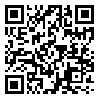Wed, Oct 15, 2025
[Archive]
Volume 9, Issue 2 (June 2013)
IJEEE 2013, 9(2): 107-116 |
Back to browse issues page
Download citation:
BibTeX | RIS | EndNote | Medlars | ProCite | Reference Manager | RefWorks
Send citation to:



BibTeX | RIS | EndNote | Medlars | ProCite | Reference Manager | RefWorks
Send citation to:
Ghazi R, Pariz N, Zeinali R. Nonlinear Analysis of Interaction with SVC in Stressed Power Systems: Effect of SVC Controller Parameters. IJEEE 2013; 9 (2) :107-116
URL: http://ijeee.iust.ac.ir/article-1-508-en.html
URL: http://ijeee.iust.ac.ir/article-1-508-en.html
Abstract: (7134 Views)
In this paper, the effect of Static VAr Compensator (SVC) parameters on the nonlinear interaction of steam power plant turbine-generator set is studied using the Modal Series (MS) method. A second order representation of a power system equipped with SVC is developed and then by MS method the nonlinear interaction of torsional modes is assessed under various conditions and the most influencing factors are determined. The results show that the stress conditions and some SVC control parameters will adversely affect the dynamic performance of a power system by increasing the nonlinear interaction of torsional modes. In this situation, the MS method can precisely provide a reliable prediction of the torsional oscillations amplitudes and the frequency content of the output system response. As the angle and speed of turbine-generator segments are used as input signals in several controllers, the frequency content of these signals are quite important in designing such controllers. This analysis is performed on a 4-areas WSCC system, which is equipped with a SVC. The obtained results can provide some important guidelines for coordinate operation and design of FACTS controllers to reduce the risk of shaft failure arising from torsional interaction in long term.
Type of Study: Research Paper |
Subject:
HVDC and FACTS
Received: 2012/06/10 | Revised: 2014/11/12 | Accepted: 2013/06/26
Received: 2012/06/10 | Revised: 2014/11/12 | Accepted: 2013/06/26
| Rights and permissions | |
 |
This work is licensed under a Creative Commons Attribution-NonCommercial 4.0 International License. |







